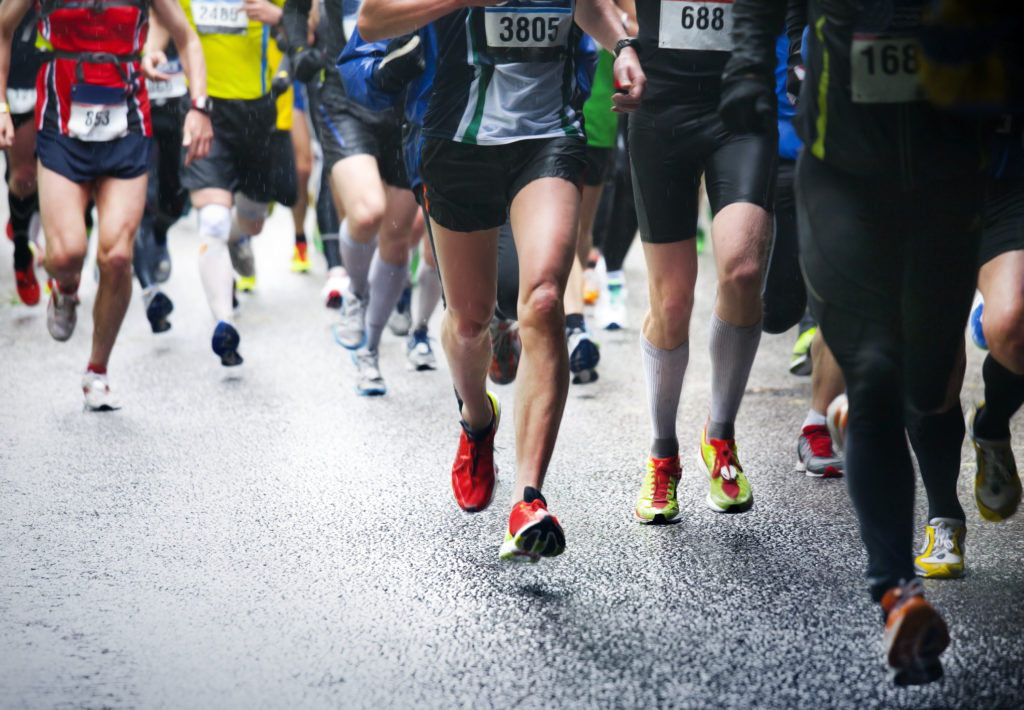
Athlete’s foot, or tinea pedis, is a common foot infection that affects up to 70% of the population as some point in time. The fungal condition causes the skin on the foot to itch, sting, burn or even peel. Athlete’s foot is contagious and is contracted by contact with the bacteria. The fungus thrives in warm, moist environments like showers, locker rooms or swimming pools. Although both athletes and non-athletes alike can suffer from athlete’s foot, the infection received its name since athletes frequent the places it’s most often acquired. It’s closely related to other fungal infections like ringworm and jock itch.
Although athlete’s foot is not life-threatening, it is still a fungal infection and can spread to other parts of the body. As kids go back to school and return to sports, or college students return to a communal shower, or you or your family spend time in the late summer heat, it’s important to know the signs and symptoms of athlete’s foot and how to treat it. We’ve broken down everything you need to know about athlete’s foot.
How It’s Acquired
Athlete’s foot is a contagious infection and is contracted by contact with someone or something carrying the bacteria. It’s most commonly caught by walking barefoot in public places like bathrooms or swimming pools. Sharing footwear with someone who has athlete’s foot is another way to contract the infection, or a skin or nail injury can also make people more susceptible.
What It Looks Like
Athlete’s foot may not always have the same appearance. Redness, scaling, dryness and cracks or peeling are all signs that can be present between the toes or the soles of the feet. For some, it produces itching and burning. The symptoms are similar to other conditions like contact dermatitis and psoriasis. Since it can be mistaken for these other conditions, it can be helpful to see a dermatologist.
How to Prevent It
The best way to prevent athlete’s foot is by practicing good hygiene. These tips can also help:
- Wear shower shoes or sandals when walking around pools, locker rooms or public showers
- Keep your feet dry and in clean socks and footwear
- Make sure you dry your feet between the toes
- Wear footwear made of natural fabrics which aren’t too tight and allow the feet to breath.
- Spray your footwear with a disinfectant to kill germs
- If someone in your household has athlete’s foot, do not share any towels, shoes or linens
- Keep bathroom surfaces like showers and tubs clean
How to Treat It
Most cases of athlete’s foot are treated with over-the-counter remedies that come in the forms of powders, sprays, ointments and lotions. In most cases, the infection responds best to these treatments. One of the best home remedies is tea tree oil, an ingredient used in many over-the-counter treatments. The oil has both antifungal and antibacterial properties. To use, mix the oil with coconut oil and apply to the affected skin two to four times a day. Studies have also shown that ajoene, a chemical found in garlic, has healing and preventative properties.
It’s important to monitor athlete’s foot since if left untreated, or if the condition worsens, it can cause a secondary infection and tissue breakdown. It can become very painful. An allergic reaction can also occur causing blistering. Diagnosing it and treating it early is crucial as once it reaches the toe nails it’s difficult to eliminate.
When to Contact a Dermatologist
If the infection does not improve within a week, make an appointment with a dermatologist. A dermatologist will examine the feet and look at a skin scraping under a microscope to determine if fungus is present. In a matter of minutes, a diagnosis is achieved. If you experience recurring athlete’s foot, it can also be helpful to see a dermatologist. It could be another condition requiring an entirely different treatment. Also, if the athlete’s foot is severe, over-the-count remedies may not be effective and require anti-fungal pills taken by mouth.
To make an appointment with a dermatologist to inspect a worrisome case of athlete’s foot, call Knoxville Dermatology Group today at (865) 690-9467.

Leave a Reply